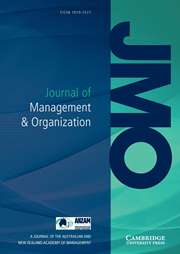Article contents
Unmasking the interplay between gaslighting and job embeddedness: The critical roles of coworker support and work motivation
Published online by Cambridge University Press: 04 November 2024
Abstract
Until now the research has mainly examined visible abusive supervision, like aggression and violence, but it’s unclear how subtle forms, such as gaslighting, impact victims. Gaslighting, an emotionally and psychologically manipulative form of abuse, is an increasingly prevalent phenomenon in contemporary times. Based on the conservation of resources theory, we examined how supervisory gaslighting affects job embeddedness directly and indirectly through work motivation. We also explored how coworker support moderates the gaslighting-work motivation link. Structural equation modeling was used to assess the two-wave time-lagged data from 337 Chinese hotel employees. The results show the negative direct and indirect effects of gaslighting, and coworker support moderates the negative link between gaslighting and work motivation. Hotel organizations should exercise caution when hiring supervisors to prevent gaslighting, which can undermine employee motivation and job embeddedness. This study also recommends raising awareness among employees to speak out against supervisors’ gaslighting behavior.
Information
- Type
- Research Article
- Information
- Journal of Management & Organization , Volume 30 , Special Issue 6: Authentic Leadership: 20-Year Review , November 2024 , pp. 2300 - 2317
- Copyright
- © The Author(s), 2024. Published by Cambridge University Press in association with Australian and New Zealand Academy of Management.
References
- 2
- Cited by

